Contents
One of the great things about motorcycles is the relative ease of being able to customize them. It’s much easier to add lights on motorcycles, and this allows people to be very creative and expressive with their lighting. However, that new freedom does have legal restrictions and it’s important that you know these rules beforehand so you don’t get in trouble.
Different states have different rules when it comes to what kind of lighting you can put on your motorcycle, so you’re going to have to do your own research to make sure you comply with your state’s rules.
There are certain types of rules that are common or standard across a majority of the states, and then there are unique individual rules that only a few states have. There can be a lot of rules to keep track of, so in order to best explain them, we’re going to first talk about the general types of rules. Afterward, we’ll explain some key rules in the individual states.
Different Types of Rules for Motorcycle Lights
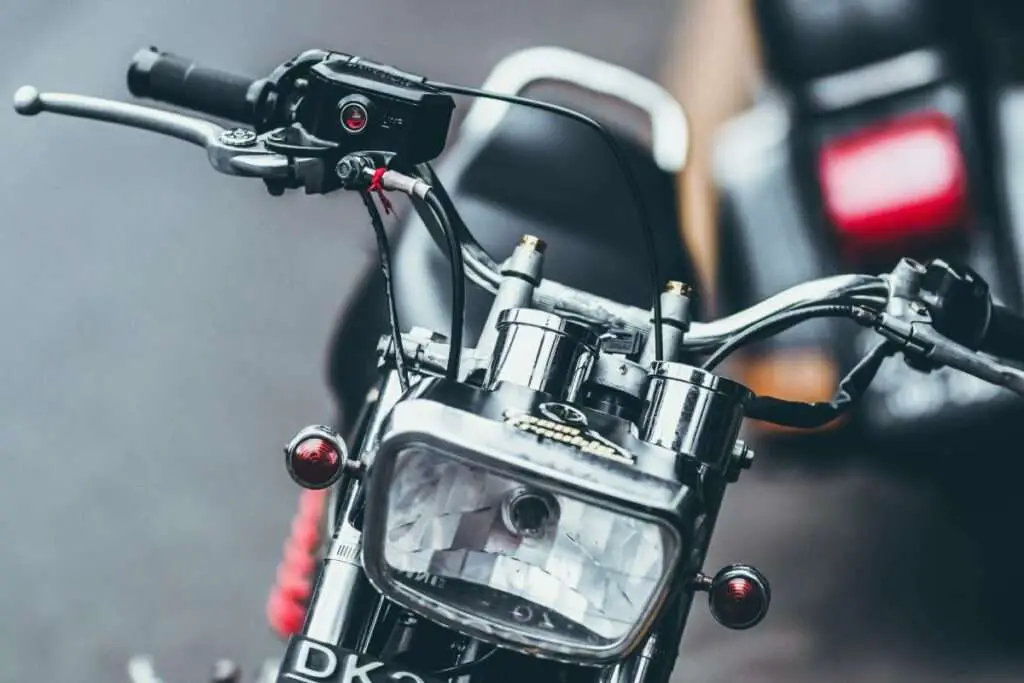
Now some people may not see why some types of lighting are illegal and how they could present issues. It turns out that lighting can produce a lot of safety and logistical issues. And like we said, the common types of rules are shared across multiple states and they cover the main issues that can be caused by lighting.
The main lighting factors that you have to keep track of are:
- The colors of the lights
- How the light operates in daytime
- The distance at which the lights can be seen
The first factor we should discuss is the color of the lights because not only is that the main feature people want to customize but it’s also the easiest feature to notice from an enforcement standpoint.
The Color Of The Lights
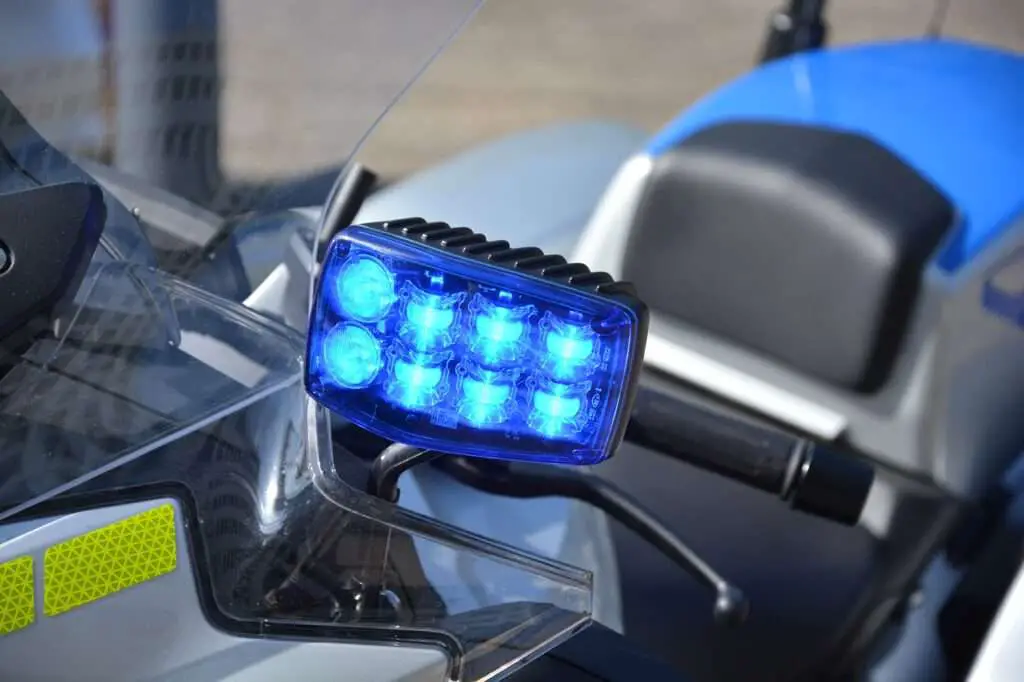
When it comes to the color of your lights, you’re not going to be able to use whatever colors you want. In addition to that, certain parts of the motorcycle have different regulations for color. For example, the headlight and taillight may only be allowed to show different colors each. The specific rules and colors that you would need to know will vary by state, so you need to plan accordingly.
However, there is a certain group of colors that is certainly regulated in almost every state, and that’s the colors red and blue. This is of course due to the fact that they resemble police lights, and you don’t want any sort of confusion in traffic that relates to this. This makes sense, and some states also ban pulsating lights to further diminish the possibility of confusion.
If you plan to use your own custom colors, you need to make sure that your selection is legal. You also have to make the coordination legal; by coordination, we mean the orientation of the lights on the motorcycle itself. For example, some people are interested in underglow lights, and in some states, they allow them in certain colors, and other states ban them outright.
Lights visibility distance
Under the law, the lights of the motorcycle have to be visible from a certain distance. The distance requirements also change depending on the part of the motorcycle: the headlights, taillights, and brake lights can all have different distances. The general rules concerning this rule will again depend on the state, but the general idea is that your lights should be able to be seen at a safe distance.
All this means is that you have to pay attention to the brightness of your lights if you decide to customize it, and you have to make sure that every part of your motorcycle lights works the way they’re supposed to. In most situations, this factor probably won’t be an issue for customization, but it’s best to always make sure.
Daytime Operation
Now lastly, we have the rules regarding motorcycle lights during the day. So certain states have mandates that require you to have your lights on during the day. In some states, the mandate only applies to motorcycles built after a certain year, in other states, it’s required to have the lights on at all times for all motorcycles.
This again is not a particularly big issue if you’re planning to customize your motorcycle lights, but if you do change your lights you just need to make sure that they run during the daytime. You also need to make sure that you follow the mandates for all of the different light parts for your motorcycle.
Different Rules for Motorcycle Lights By State
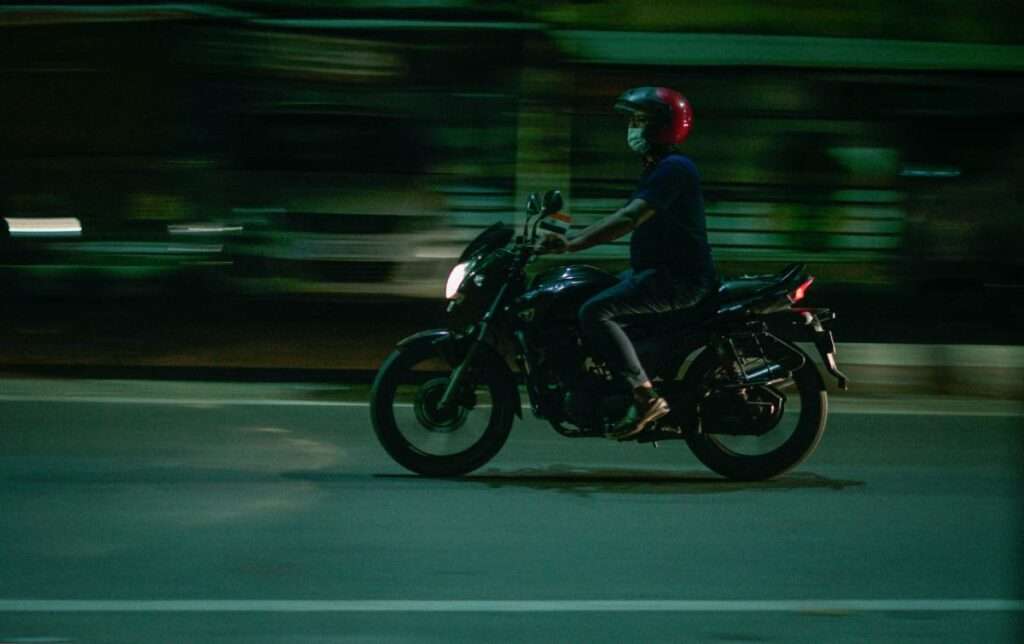
Now that you understand the basic types of rules that govern motorcycle lights, it would now be a good time to discuss the specific rules that apply in each state. By now, you should have noticed that a lot of the rules will vary to some degree depending on the state that you live in.
So, in this section, we’ll list all the states and one significant unique rule that it has for motorcycle lights.
Alabama
Alabama is unique because it doesn’t have any specific rules for LEDs (light-emitting diodes) on motorcycles, instead, they group it under the general lighting, so any questions you have for LEDs on your motorcycle can be answered by the normal rules.
Arizona
So for Arizona rules, you have to focus on the location and color of the lights. This is because Arizona doesn’t allow you to have extra lighting that messes with the original headlights and taillights. They also have color requirements for the lamps and reflectors; the ones in the front should be amber while the ones in the back should be red.
Arkansas
Arkansas has really specific rules for lighting brightness compared to the other states. They say that every light except for the headlight can’t shine brighter than 330 candlepower which is about 3770 lumens. They also have general color restrictions such as no police and green lights.
Connecticut
Connecticut also has a specific color policy that’s split among the main 3 parts of the motorcycle. The front of the vehicle should be either white, yellow, or amber. The middle part of the motorcycle should be amber or yellow. Finally, the rear of the vehicle should be red.
Delaware
This is a weird policy, but in this state, your motorcycle shouldn’t have more than 2 side cowl lamps. Furthermore, the lamps can only emit amber or white light that doesn’t produce a glare. Also, Delaware does also allow an underglow bar, but it only has a limit of one.
Georgia
Georgia is relatively loose with its color policy when compared to the other states. The only color that it absolutely doesn’t allow is the color blue, but you should still use your best judgment to avoid any kind of confusion for police.
Idaho
This state has a combination of policies we’ve talked about before for other states. You’re not allowed to have more than 2 side cowl lights, and they allow you to use whatever color you want except for the color red.
Indiana
This state can be confusing to customize for because it doesn’t have any specific laws that talk about the status of LEDs. You’re going to have to keep up with the latest information to make sure that you don’t get into any legal trouble.
Kansas
Similar to many other states, Kansas has a specific color policy that regulates what colors the individual lights can be. Kansas also permits neon ground effect lighting, which is when you attach neon tubes on the bottom of the motorcycle to create an underglow. The rules just state that the color can’t be red, the light can’t flash, and the tubes themselves shouldn’t be visible.
Kentucky
This state doesn’t have deep legislation on general motorcycle lighting, but they do permit flashing lights, but you can only use flashing lights to warn others in traffic. You can’t use flashing lights for general decoration purposes.
Maine
This state has a deep color policy for LEDs where certain parts of the motorcycles can only have certain colors. They also emphasize the rule where you can’t install lights that will distract the driver, which obviously makes sense. Lastly, it has an interesting policy for underglow lighting: it allows them for decorating and showing off at events and gatherings. But, when you’re driving in public in general, you need to have your underglow lights off.
Missouri
Missouri allows LEDs, pods, and strips, but they’re heavily regulated. The lights themselves can’t be flashing or oscillating, and the lights have to be directed toward the engine and drivetrain so that it doesn’t interfere with the operation of the driver.
New Jersey
New Jersey is one of the most strict states out there when it comes to motorcycle lights; they don’t allow any additional lights beyond the base lighting.
Pennsylvania
Pennsylvania is also one of the more strict states for lights. The only extra lights are ones that are used to help protect the driver, and the state doesn’t specify what specific colors you can use, as long as it helps add to the visibility for the driver.
If a certain state wasn’t listed, it either had policies that we’ve mentioned and detailed numerous times before, or the state doesn’t have much of a policy to talk about. The main point is that you still need to find out the policies for your state. The purpose of listing those states was to provide examples of the main policies that are standard and give policies that are more unique and specific.
Motorcycle Light Laws In Foreign Countries
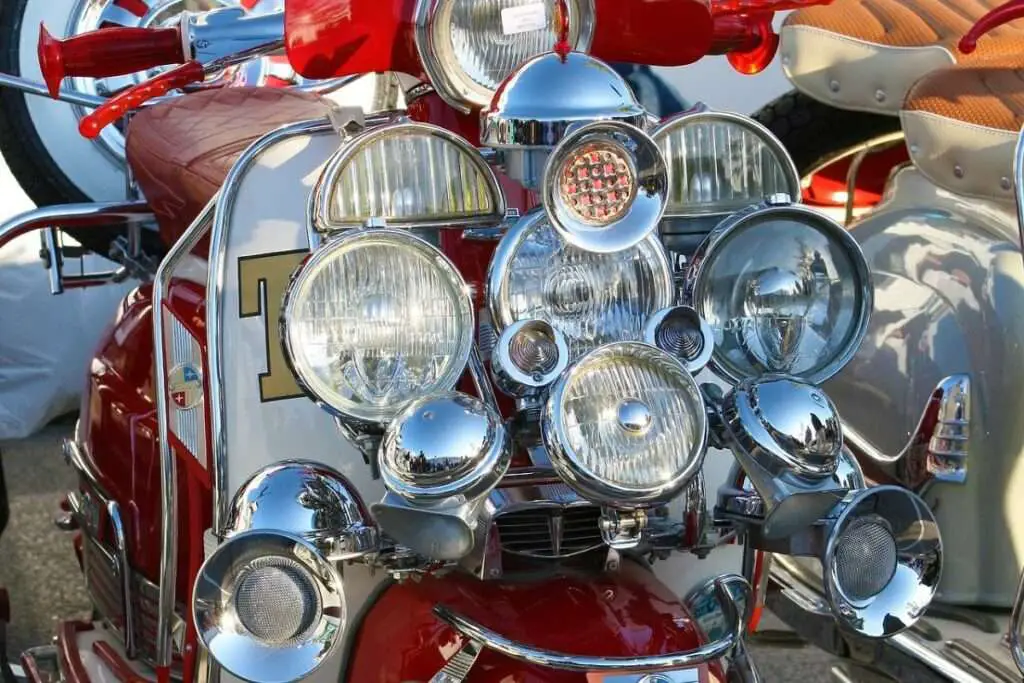
Now we’re going to talk about the rules and regulations for motorcycle lights outside the United States. This is obviously very useful information if you live in a foreign country, but this can also be very helpful if you’re traveling and visiting. The laws in other countries are much different than in the US.
The three countries that we’re going to talk about for example are:
- Australia
- Canada
- United Kingdom
Just like how individual states in the US have their own variations and specific policies, certain parts of the country will have different rules compared to the other parts of the country, and we’re going to discuss all the policies that you should be aware of.
Australia
Compared to the United States, Australia is very loose with the motorcycle light laws. It allows any kind of LED or neon light on the bottom of the motorcycle, as long as the light does not flash.
One significant rule that you should be aware of is that if you customize your motorcycle with LEDs, you need to get a compliance sticker taped onto your motorcycle that’s issued by the local Department of Transportation.
Canada
In general, Canada will allow you to have LEDs under your motorcycle, but the lights can’t be flashing red or blue. But, you do need to be careful if you’re going into certain parts of the country because a lot of places ban underglow. These places include British Columbia, Alberta, and Ontario, but you should always research the policy for any place that you decide to visit.
United Kingdom
The United Kingdom is the most strict country of the ones we’re talking about. The front of the motorcycle can only have the headlight with no additional light, and the back of the motorcycle can only have the brake light as well. You can use LEDs on the other parts, but you can’t use the color green and the LEDs themselves shouldn’t be visible.
The country also states that the lights can’t be distracting to other drivers. If you plan to customize your motorcycle with vanity lights, you need an independent switch to turn it off and on quickly, but other than that you can use vanity lights however you want.
Conclusion
In general, motorcycle light laws are not that complicated to understand, it’s just that there are a lot of variations depending on where you are and there can be a lot of small things you need to keep track of. But as long as you just do some simple searching for your situation, you should be able to confidently customize your ride while knowing that your lighting is perfectly legal!

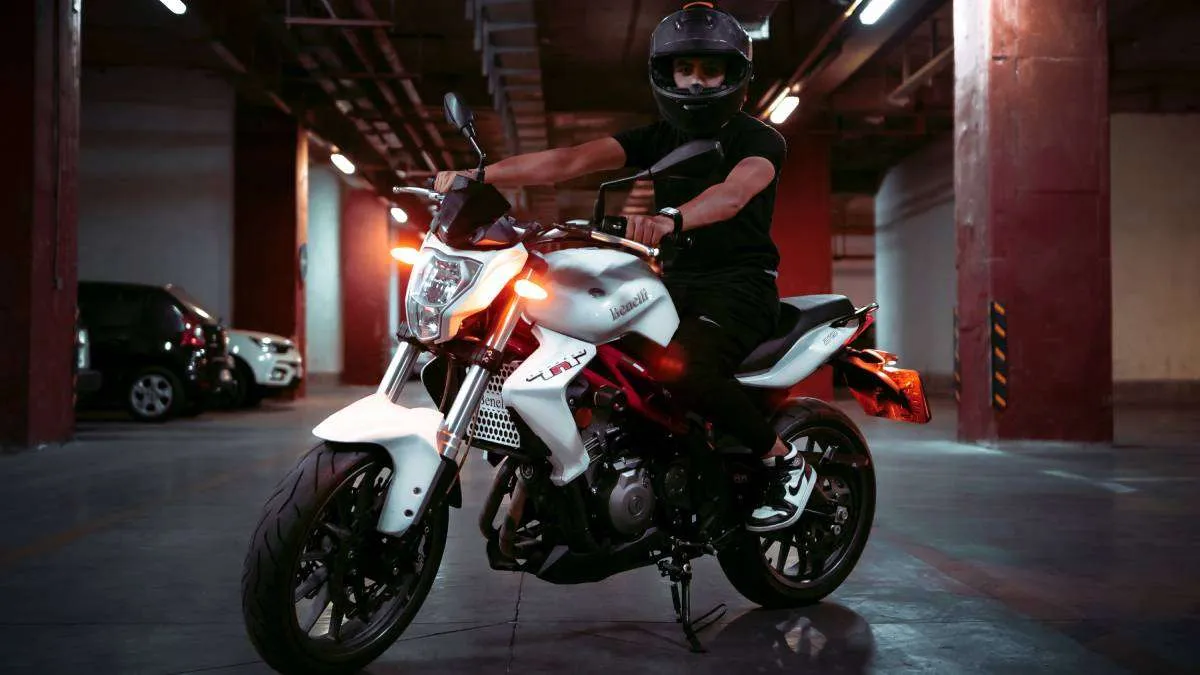
 Why Does Only One Headlight Work on Motorcycles?
Why Does Only One Headlight Work on Motorcycles?  How To Save Money And Avoid Stress By Insuring A Motorcycle
How To Save Money And Avoid Stress By Insuring A Motorcycle  Choosing The Best Motorcycle Jacket: A Buying Guide
Choosing The Best Motorcycle Jacket: A Buying Guide 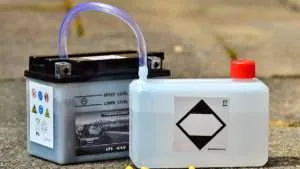 Is Your Motorcycle Battery Dead? 8 Symptoms to Look For
Is Your Motorcycle Battery Dead? 8 Symptoms to Look For 